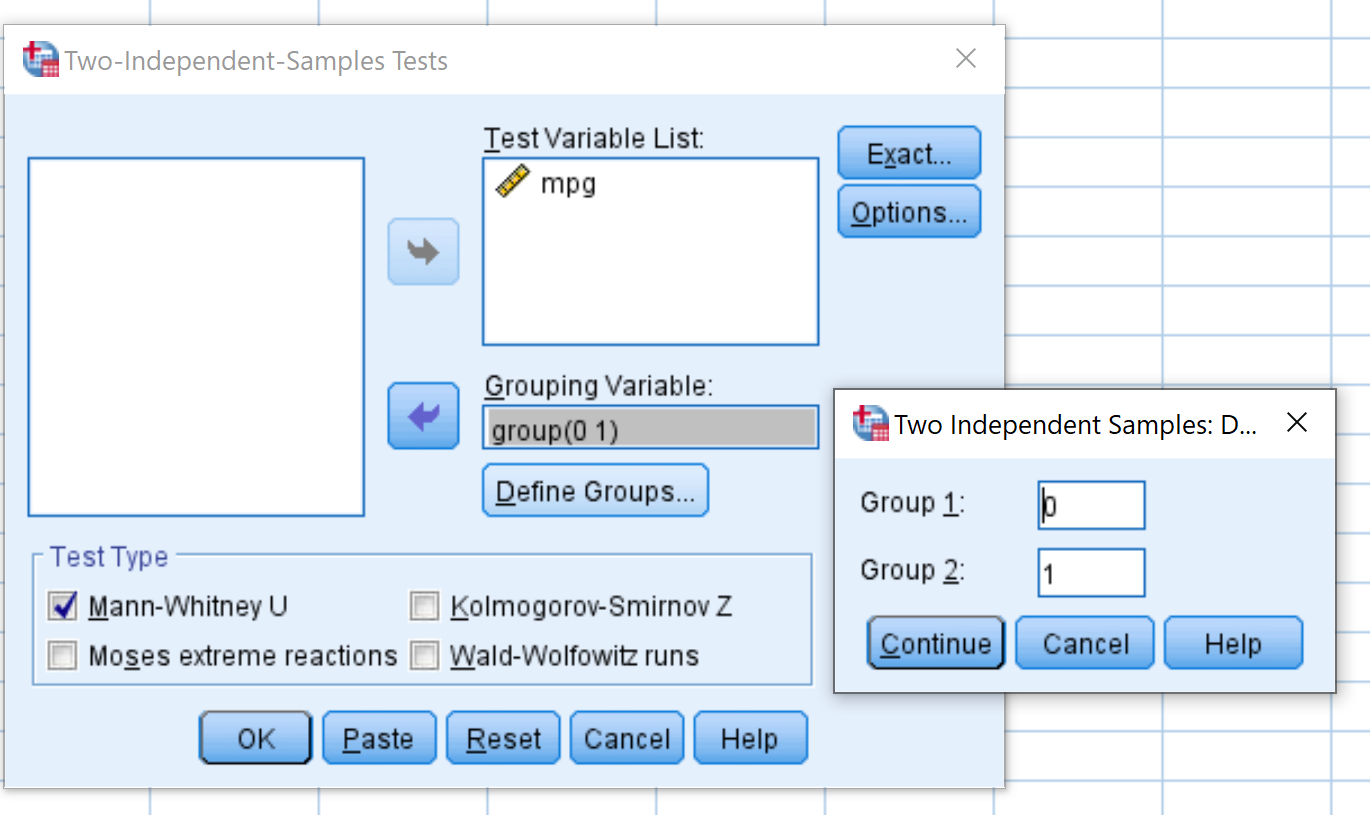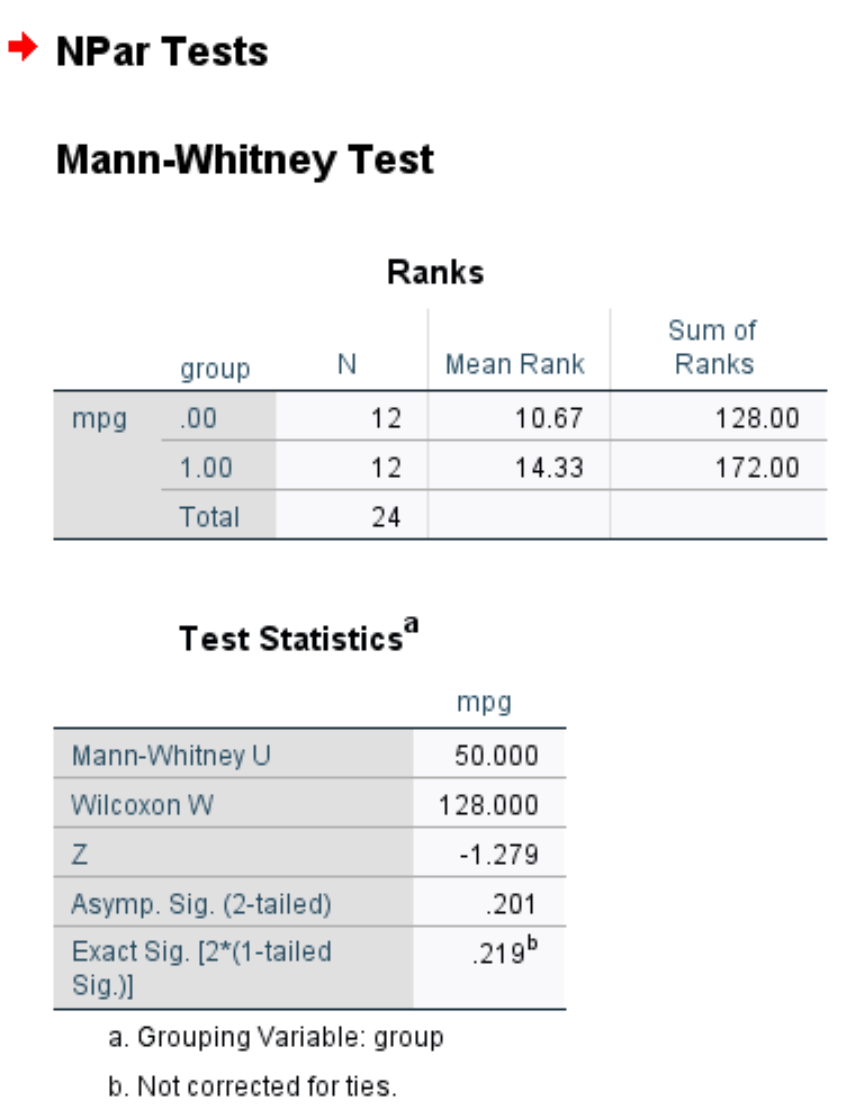A Mann-Whitney U test (sometimes called the Wilcoxon rank-sum test) is used to compare the differences between two samples when the sample distributions are not normally distributed and the sample sizes are small (n two sample t-test.
This tutorial explains how to perform a Mann-Whitney U test in SPSS.
Example: Mann-Whitney U Test in SPSS
Researchers want to know if a fuel treatment leads to a change in the average mpg of a car. To test this, they conduct an experiment in which they measure the mpg of 12 cars with the fuel treatment and 12 cars without it.
The following screenshot shows the mpg for each car along with the group they belong to (0 = no fuel treatment, 1 = fuel treatment):

Since the sample sizes are small and the researchers suspect that the sample distributions are not normally distributed, they decided to perform a Mann-Whitney U test to determine if there is a statistically significant difference in mpg between the two groups.
Perform the following steps to conduct a Mann-Whitney U test in SPSS.
Step 1: Select the Mann-Whitney U Test option.
Click the Analyze tab, then Nonparametric Tests, then Legacy Dialogs, then 2 Independent Samples:

Step 2: Fill in the necessary values to perform the test.
Drag mpg into the box labelled Test Variable List and group into the box labelled Grouping Variable. Click on Define Groups and define Group 1 as the rows with value 0 and define Group 2 as the rows with value 1.
Make sure the box next to Mann-Whitney U is checked. Then click OK.

Step 3: Interpret the results.
Once you click OK, the results of the Mann-Whitney U Test will be displayed:

The most important numbers in the output are the Z test statistic and the Asymptotic 2-tailed p-value:
- Z test statistic: -1.279
- p-value: .201
Since the p-value is not less than 0.05, we fail to reject the null hypothesis. We do not have sufficient evidence to say that the true mean mpg is different between the two groups.
Step 4: Report the results.
Lastly, we will report the results of our Mann-Whitney U test. Here is an example of how to do so:
A Mann-Whitney U test was conducted on 24 cars to determine if a new fuel treatment lead to a difference in mean miles per gallon. Each group had 12 cars.
Results showed that the mean mpg was not statistically significantly different between the two groups (z = -1.279, p = .2010) at a significance level of 0.05.
Based on these results, the new fuel treatment does not have a significant impact on the miles per gallon of cars.